Editor’s note: This article was updated Nov. 9 to clarify that the Executive Committee applies spring term budget allocations to the following academic year when reporting data.
This fall, the Executive Committee finalized the allocations it would give to each student organization on campus for 2023. Some organizations didn’t receive all the funds they requested.
In some cases, that means ambitious events got pared down, or student leaders had to turn to outside fundraisers to pull off plans to improve campus life and help Rockbridge County residents.
For the first time in six years, the Executive Committee, or EC, has published the funding it distributed to each student organization on campus. The last time the EC reported this data publicly was in spring 2017.
The Phi compared data from this year’s budget allocations to the 2017 numbers. While some organizations have seen their budgets balloon, others have flatlined, or even seen decreases.
The money the EC distributes comes from the activity fee that every student pays to attend the university, said Diwesh Kumar, vice president of the EC.
The EC has three rounds of club funding throughout the year. The first one is during spring term, when the EC distributes up to 88.5% of its budget to fund activities in the following year. During fall term, the EC can distribute up to 92.5% of its total budget for the year. And in winter term, the EC can distribute up to 96.5%.
To apply for a budget from the EC, clubs have to fill out an excel spreadsheet budget request. Normally a club tells the EC what events they are planning, how many members they have, and if applicable, how much money they spent the previous year.
After that step, clubs meet with the EC for an interview, Kumar said.
Kumar offered a few potential explanations for why clubs may have gotten less than they asked for.
First, he said, the amount of money the EC has to distribute, which increases to keep up with inflation, is not growing as fast as clubs’ budget demands.
“[A club with] $10,000 last year, they are not requesting $10,500 this year,” Kumar said. “Some of them are [asking for] increasing it by 50% or 80%.”
Clubs typically can’t get more than a 10% budget increase per year, except in exceptional circumstances, according to the EC’s budget policies.
Kumar also said that some clubs did not apply for funding during spring term, when there was more money available.
Kumar added that the rollover money that was not spent on in-person events when COVID-19 restrictions were in place is no longer available to be allocated.
Tracking winners and losers
For the 2022-23 school year, each undergraduate and law student paid an activities fee of $590. According to Steve McAllister, the vice president of finance and treasurer for Washington and Lee, only $310 of that funding goes to clubs. Between 1,867 undergraduates and 381 law students in 2022, the student body raised $696,880 to fund 72 student organizations.
In comparison, in the 2016-2017 school year, the student activities fee was $255, and the total enrollment was 2,160. Seventy-six clubs were funded by the EC then, but most received hundreds of dollars from the EC, not thousands.
The Phi compared the funds new and long-standing organizations have received from the EC between now and 2016-17. The EC includes spring term 2023 allocations when reporting 2023-24 academic year funding.
Some organizations have seen their budgets balloon in the past six years as their presence increases on campus.
The Student Association for Black Unity saw its budget go from $4,140 in 2017 to $27,000 this year.
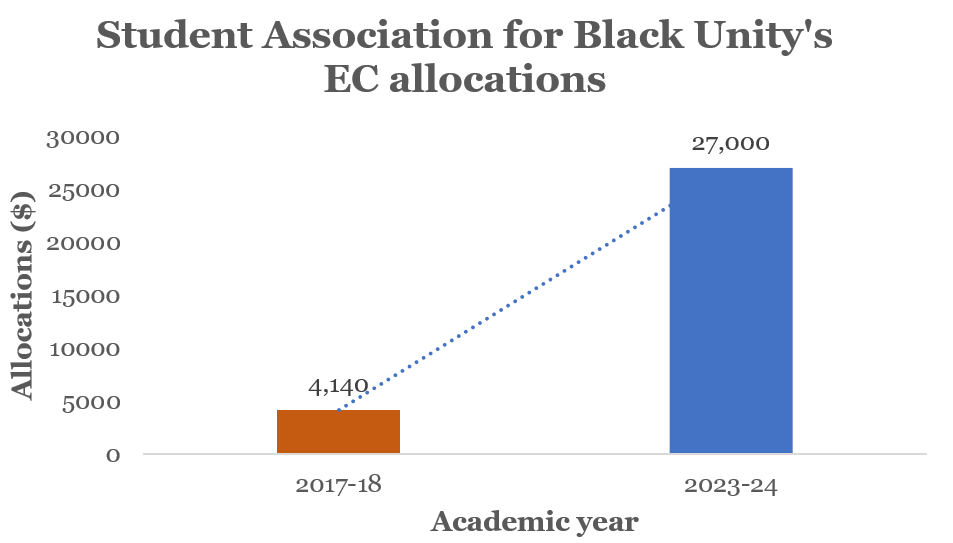
Meanwhile, the Sexual Health Awareness Group got $7,250 from 2023 budget allocations. In 2017, the organization received $350, according to the EC’s data.
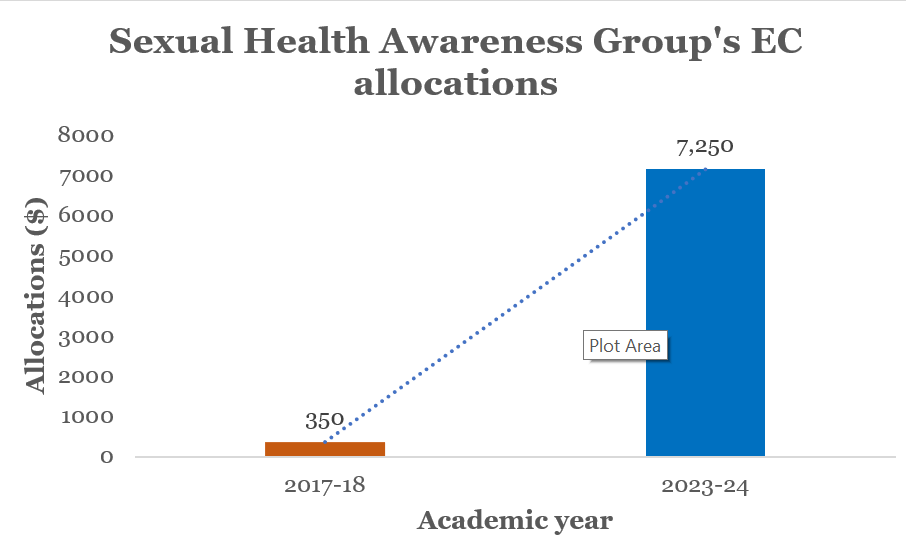
Some longstanding organizations, meanwhile, saw their budget allocations flatline or decrease. Campus Kitchen, an organization that battles local food insecurity, got $15,000 this year. The organization got a higher allocation as far back as the 2016-17 academic year. Then, it received $15,500 — and then, a single dollar could purchase more food.
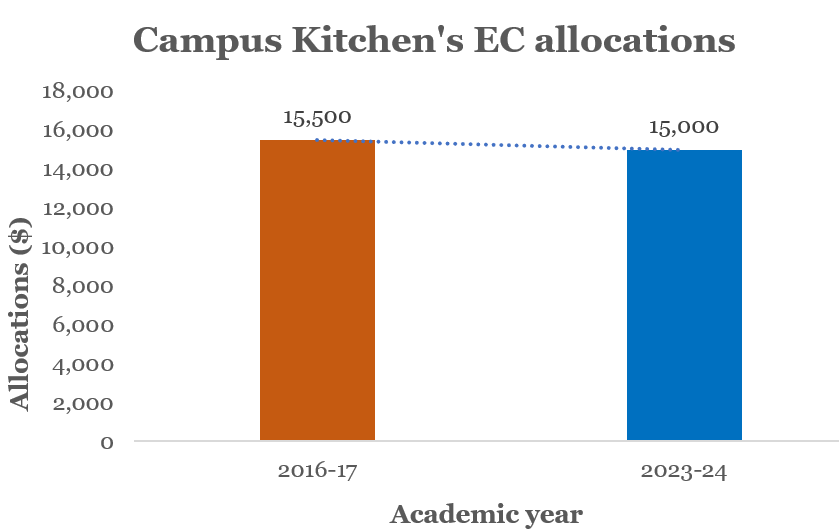
Mock Convention, which will take place three months from now, got $50,000 from the EC in spring 2023. In the year directly preceding other cycles, Mock Con received more: $87,000 in 2015 and $60,000 in 2011.
Student leaders say the budget allocation process could be improved
Shae Reinberg, ’25, president of Student Environmental Action League (SEAL), found herself in a tough spot when she came back from a semester abroad this fall. She discovered that in her absence, temporary club leaders had requested about half of what she expected for the organization’s budget: $2,800, less than the group got last year.
Reinberg said she had planned to expand SEAL’s activities, which include environmental initiatives on campus and in the community. She was also planning to double the number of vendors at Taste of Lexington, SEAL’s trademark annual event where students try food from locally-sourced vendors.
So she filled out a request to the EC this fall to double SEAL’s budget. Instead, she got $340 added to SEAL’s budget.
Now, Reinberg is figuring out how to pull off SEAL’s staple event without an influx of money. She’s planning joint fundraisers with other organizations on campus.
Reinberg said she wishes the EC could change the timing of budget allocations. More students are off-campus during Spring Term, she said, making it harder to organize a compelling request.
“The timing for me is the constraining part,” Reinberg said. “A change in leadership… is going to be a completely different perspective on how much [funding] is necessary. I think that should be considered in the process.”
Meanwhile, Eli Staubi, ’25, president of the Red Cross Club, got $350 this year. That’s 15% of the request he submitted, he said.
Staubi doesn’t blame the EC for the gap between his ask and his allocation. He said it’s tough for small clubs like the Red Cross Club, which is seeing a resurgence after COVID-19, to compete for funds when they don’t have a record of big events yet.
Harper Meacham, ’25 is co-editor-in-chief of Liberty Lexington, which received $372 from the EC this spring. That’s just enough to pay for the organization’s website, where students publish articles about humanitarian strife. Meacham said his co-editor is still paying out-of-pocket for a major publication expense: Shutterstock, a photo service.
He said he just wants to know more about the EC’s criteria for funding clubs so he can make better budget proposals in the future.
Kumar said the expectations are straight forward.
“[We ask] what was your budget request last year, and how much did you actually spend,” he said. “And then at the bottom, how much are you requesting for this upcoming year. So we look at it very holistically and then allocate funding based on that.”



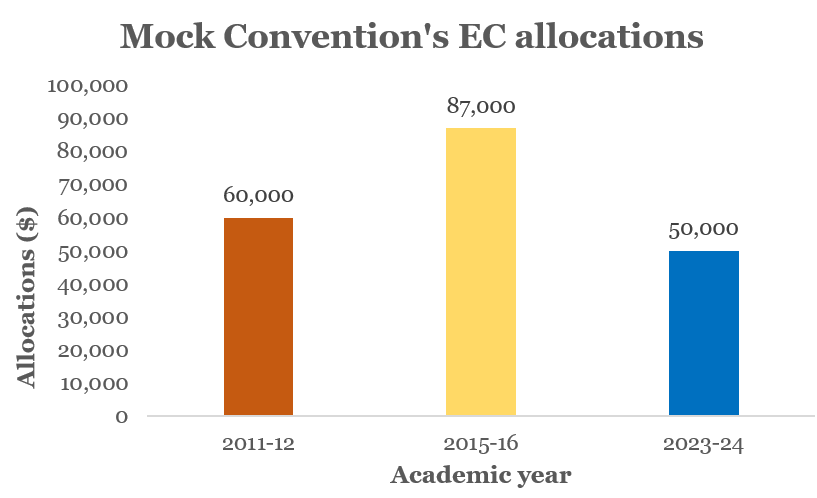










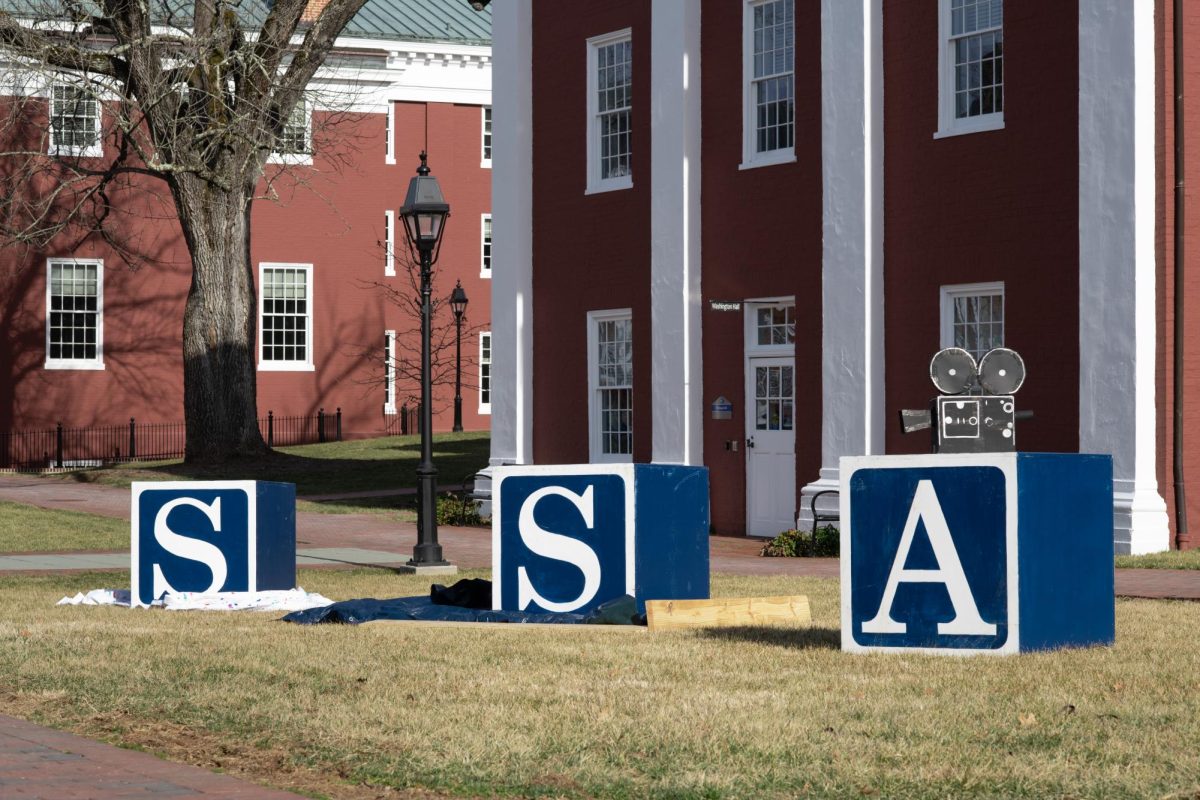


Anonymous • Nov 9, 2023 at 7:37 pm
I fail to see how the EC representatives, who simply do not run on platforms related to how they define the honor system or how they wish to allocate budget funding, are qualified to make these deliberations. The student body should bifurcate the EC to a governing body and an honor council or, at the very least, share their preferences for budget allocation during the campaign. If I knew Ernst would cut funding to service organizations like the Campus Kitchen, I would have changed my vote.